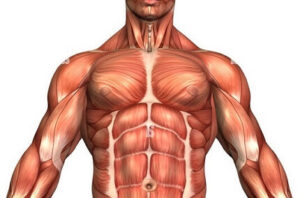Back to: Physical Health Education SS2
Welcome to today’s class!!
We are thrilled to have you in our class!!
In today’s Physical and Health Education class, we will be learning about Muscles II
Muscles II

As we have come to shockingly know in our previous class, we all have more than 600 muscles in our bodies. Different types of muscles have different jobs. Some muscles help you run, jump or perform delicate tasks like threading a needle. Other muscles allow you to breathe or digest food. Your heart is a hard-working muscle that beats thousands of times a day.
Muscles are soft tissues. Many stretchy fibers make up your muscles.

Many disorders, injuries and diseases can affect how muscles work. These conditions can cause muscle pain, muscle spasms or muscle weakness. More severe disorders can lead to paralysis.
To keep your muscles healthy, you should focus on staying healthy overall:
- Get plenty of exercise: Staying active can keep all of your muscles strong, including your heart. Try to do a combination of cardiovascular activity and weight-bearing exercises. Talk to your provider about an exercise program that’s right for you. To avoid injuries, be sure to warm up properly before exercise. You’re less likely to injure muscles that are warm.
- Eat right and make smart choices: Be sure to eat a balanced diet to keep your muscles strong. Avoid sodium and trans fats (such as in fried foods), which can lead to heart disease. If you smoke, talk to your provider about a plan to help you quit.
- Maintain a healthy weight: Carrying extra pounds can cause injuries. It also increases your risk of health problems, including high blood pressure. Talk to your provider about the most appropriate weight for your body and lifestyle. If you carry extra weight, ask your provider about a weight control plan.
- Rest when you need to: Give your muscles time to heal after a strain. You should also rest if you feel sore after vigorous exercise. Allowing your muscles time to repair and rebuild can help you avoid injury.
- Schedule regular screenings: See your provider regularly. Get screened for diseases that put you at a higher risk of muscle problems. Staying on top of your health allows your provider to detect problems early. That’s when treatments are more effective.
In summary, Muscles are soft tissues. Many stretchy fibers make up your muscles.
Evaluation
What are Muscles? Mention three ways to keep the muscles healthy.
Reading Assignment
How many Muscles are there in the human body?
Weekend Assignment
Explain the types of Muscles in the Human body.
We hope you enjoyed today’s class. In our next class, we will be talking about Somatotypes.
Let us know your thoughts and questions in the comment section, and we will attend to them as fast as we can.
